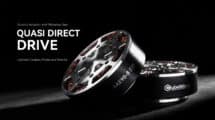Working with wearable exoskeleton technology can be both daunting and exhilarating at the same time. For better or for worse, exo technology stands at the intersection of mechanical engineering, human anatomy, psychology, and in the case of powered wearables, robotics engineering as well. This leads to a highly interdisciplinary field that is challenging to describe or specialize in.
Exo technology touches in one way or another, in no particular order:
Biology: exoskeletons are tools, but they are tools that must be worn directly on the body of the user. Human anatomy and physiology are critical to understanding which parts of the body are tolerant to straps and human-machine interfaces. The exo devices must fit equally well when a person starts moving (active fit). For instance, the human knee may look like a simple hinge joint, but it is more complicated than that, and exos have to take that into consideration (for example, the brand new UPLIFT by Mawashi has a creative knee joint to emulate the natural movement of the human knee).
Psychology & Sociology: tools can be dropped and picked up again as needed. However, donning and doffing wearables takes longer. It is, therefore, important to understand how the users and those around them will react to them. If construction worker picks up an occupational/industrial exoskeleton, will they be perceived as “weak” by their coworkers? Similarly, medical exoskeletons may also suffer from preconceived negative biases, similar to existing walking aids like canes or walkers. As exoskeleton technology becomes more advanced and widespread, ethical considerations and policy regulations will play a crucial role in shaping the development, use, and social impact of these devices.
Process Engineering: adding an exoskeleton at a work site or a rehabilitation center will change how tasks are performed. Who should be trained, how will the devices be stored, who is responsible for their regular inspection and maintenance, and how will their integration change existing procedures? All fall within change management, and getting it right is critical to the long-term adoption of wearable devices.
Mechanical Engineering: fundamentally, wearables are devices that must meet all regular design criteria. This includes design for manufacturability, design for serviceability, safety, and disposal. Failure mode analysis and safety considerations have to be baked into the project from the beginning. Industrial designers and human factors specialists can help create devices that are visually appealing, user-friendly, and comfortable to wear. Similarly, material scientists are expected to choose the correct components for an exoskeleton that are both light, durable, and compatible with the intended use case for the wearable device.
Ergonomics and/or Physical Rehabilitation: these are useful when matching the correct exoskeleton to a gap or a need that needs to be filled. Wearable technology isn’t always the right solution. Even when it is, however, it needs to be applied strategically to the problem it is fixing (this can be low worker retention, high injury rates, limited access to physical rehabilitation, etc.). Knowledge in these fields helps match the solution to the problem. It is also required to generate the appropriate metrics to demonstrate if the exo is a good match or not.
Robotics & Electrical Engineering: if the exoskeleton project is a powered device, robotics, and control also need to be included. Even if an exoskeleton relies entirely on elastic elements for actuation, it may still include custom or off-the-shelf wearable sensors that have to integrate with the wearable device.
In conclusion, it can be challenging to get started with exoskeletons. Because the exoskeleton technology field is so interdisciplinary, the field can greatly benefit from organizations that are immersed in it. These exo-centric organizations can create a bridge between the general public, investors, buyers, and regulators. Integrators, institutes, trade and/or professional associations are ideal generators for educational and reference material to make exo technology more digestible. The complexity that surrounds exo technology is a common criticism from those just starting to learn about it and its many possibilities. A large part of that complexity stems from how interdisciplinary the field is.
For more on the topic, the ASTM Excellent Exo Chat has an episode with guest Dr. Don Peterson titled: So, you want to major in Exos? Link. In this podcast episode, Don Peterson, Ph.D., M.S., FAIMBE, Dean, College of Engineering and Engineering Technology, Professor, Mechanical Engineering, artfully touches upon the many faces of exo technology and that there really is no one correct way to get started.









Add Comment